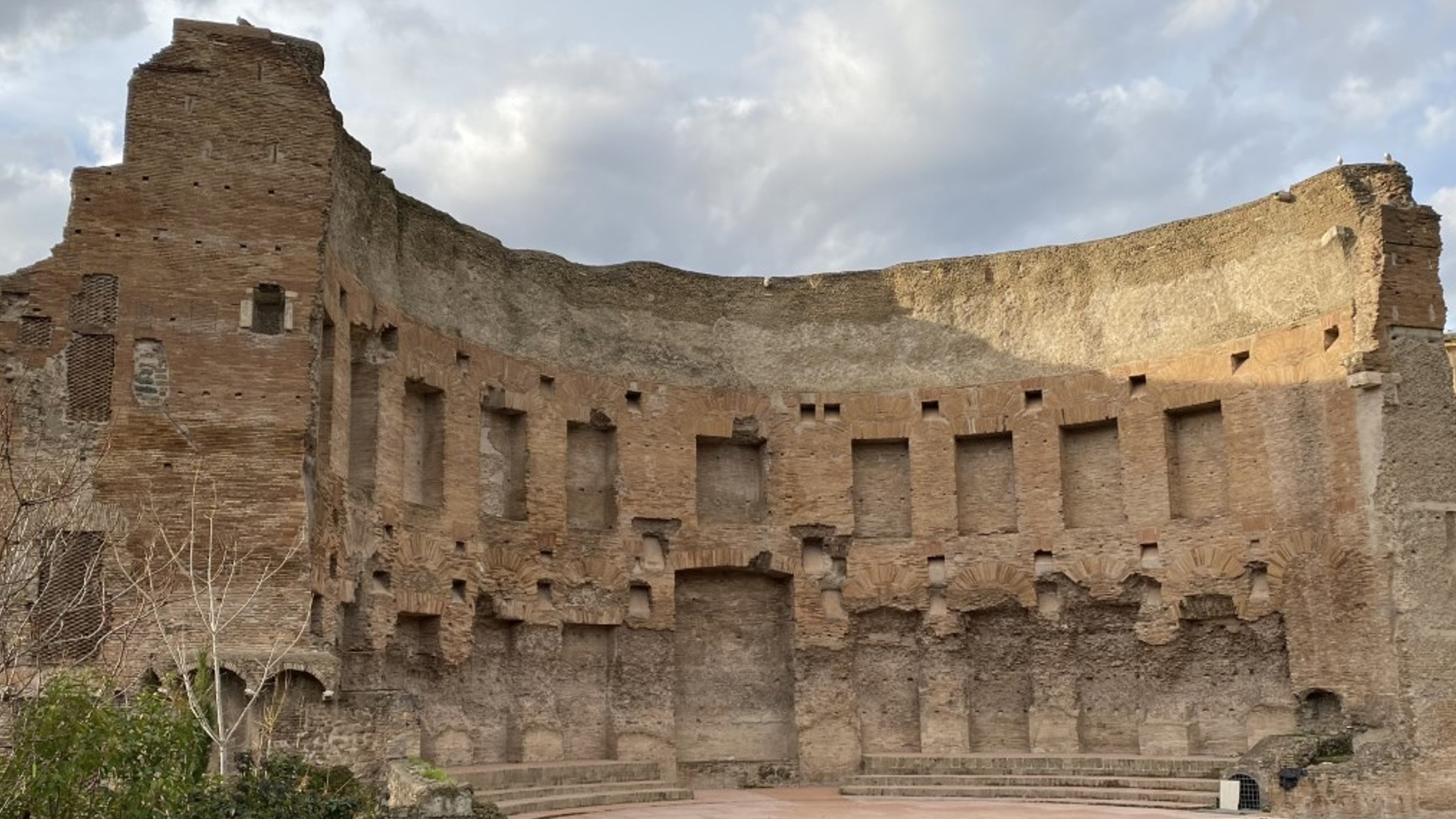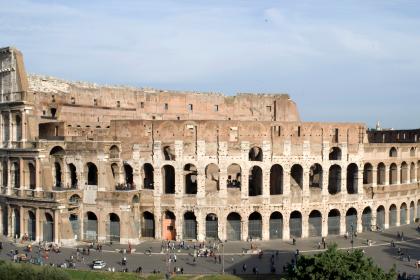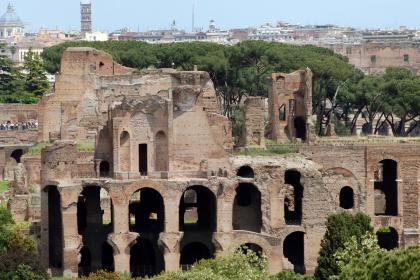
The Thermae Traiani or Thermae Traianae rise on the top of Colle Oppio, in the third Augustan region and were built, as we know from ancient literary sources, on a project by the most famous architect of the time, Apollodorus of Damascus.
Dedicated by the Emperor Trajan in 109 AD. and chronologically preceded by the Baths of Agrippa and by those of Nero and Tito, they were the first "great baths" in Rome, at the time the largest bath complex in the world.
The plan of the Baths of Trajan was reconstructed both on the basis of the monumental remains present on the hill, identified during the works for the creation of the Trajan Park in the 1930s, and thanks to the fragments of the Forma Urbis Severiana (a map of the city of ancient Rome engraved on marble slabs, dating back to the time of Septimius Severus) and drawings made in the 16th and 17th centuries.
The complex extended over an area of over six hectares, occupied by previous constructions such as the Esquiline pavilion of the Domus Aurea, the Baths of Titus and the fresco building of the "Painted City", which had the function of service undergrounds and connecting the various parts of the baths.
The orientation on a north-east - south-west axis, different from the north-south one of the previous structures, seems to be conditioned by the desire to seek the best position with respect to the sun and winds, in order to guarantee the calidarium a greater and more long exposure to solar heat.
Even the project of the thermal plant was innovative compared to the previous ones, with the characteristic of a large green area, free from constructions and enclosed in a porticoed enclosure, which surrounded the central building body on three sides with the rooms intended for bathrooms and to body care.
Today only a few structures remain of the central body: the exedra of the eastern gymnasium and next to the apse of a hall on the south side; nearby, part of the walls incorporated into a small building, formerly the hunting lodge of the Brancaccio family.
The thermal enclosure could be accessed from various entrances placed on all sides. From the monumental one located to the North-East, preceded by a sort of Propylaeus (front porch), one entered the bath complex, which began from the natatio, the large pool of cold water, which was followed, on the same axis, by the large frigidarium in the middle and then the rooms for warm and hot baths, tepidarium and calidarium; on the sides of this axis were the changing rooms and gyms.
Of the external enclosure the magnificent central hemicycle of the south side is still visible today, of which the lower level is still perfectly preserved (where today the entrance to the Domus Aurea is located), and the South-West exedras and part of the South-East one, identified with the two libraries, Greek and Latin. In fact, the Roman concept of the use of the baths provided, in addition to the actual bath, also sports, leisure and culture activities.
The hemicycle of the South-West exedra is characterized by the presence of a double order of large rectangular niches, identified as cupboards for storing books and documents. Between the two rows of niches the deep recesses for supporting a wooden gallery are still visible. The exedra was covered by a semi-dome, now preserved for a height of 4 m, and was decorated with trapezoid-shaped coffers. Few remains remain, however, of the south-eastern exedra, on the opposite corner of the enclosure.
Finally, remains of the North-East exedra can be seen on the northern edge of the Park, almost opposite the Sette Sale (Seven Rooms), the name by which the large water cistern that supplied the Baths is known.
Photo credits: Sovrintendenza Capitolina
Domus Aurea

 Condividi
Condividi
L’Amphithéâtre Flavio (Colisée)

 Condividi
Condividi
Forum Romain et Colline du Palatin

 Condividi
Condividi
Informations
The monument is located in a free-access area at the Parco del Colle Oppio.
 Condividi
Condividi
Location
Pour connaître tous les services d'accessibilité, visitez la section Rome accessible.











































